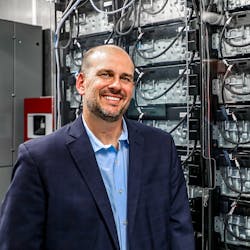Understanding the Inflation Reduction Act: A PowerSecure micro-look
The energy industry is buzzing with anticipation about the projected energy infrastructure investment growth enabled through the Inflation Reduction Act (IRA). As an industry-leading microgrid solutions provider, we know people have questions about how they can leverage the IRA in their energy infrastructure and resilience investments. Here we break down the core elements of the IRA, its real-world applications, and why now is the time to realize the best return on investment (ROI) on distributed energy assets.
Energy investment implications of the IRA
First-ever tax credits for microgrid components could cut costs by approximately 5%-50%:
- Expands 30% investment tax credit (ITC) for microgrid controllers, stand-alone energy storage, biogas property, dynamic gas and linear generators that begin construction before Jan. 1, 2025.
- Upper range of cost reductions is contingent upon projects qualifying for bonus credits associated with domestic manufacturing and/or siting criteria.
Incentives for clean energy production and technologies through 2032:
- Extension of renewable electricity production tax credit (PTC) and ITC through 2024.
- Establishes new (tech-neutral) clean energy PTC and ITC starting in 2025 through 2032.
- Primary IRA energy-related provisions are estimated at approximately $260 billion over a 10-year period.
Easier and more attractive finance opportunities:
- Direct pay to states, localities, tribes, rural cooperatives and nonprofits for qualifying PTC and ITC projects (upfront cash payment in lieu of claiming certain energy tax credits).
- Tax credit transferability (ability for investors to sell tax credits to third parties).
- Targeted grant/loan programs for states and electric utilities to accelerate the transition to clean electricity.
More resources:
- Department of Energy summary on IRA energy and climate provisions.
- Microgrid Knowledge IRA resource page.
Microgrid controllers: A limited window for maximum savings on a critical component
Those not versed in tax law may still struggle to see how this applies to their microgrid energy project. So here we’ll consider how the IRA applies to one of the most important elements of a microgrid system, the controller. The controller is important to consider now not only because of its critical role in the microgrid, but also because the incentives for the controller apply to all types of microgrid projects that begin construction before 2025, including those with fossil-based generation.
A microgrid controller is the brain of your system. As the name implies, it’s the component that controls the flow of energy from diversified energy supply sources on your system and balances the delivery and consumption of electric power on a real-time basis. The controller networks with all metering systems and protective devices, centralizing performance data and alert notifications across the microgrid. Providing real-time performance analytics and management capability, the microgrid controller is what allows you to optimize system performance and realize carbon-footprint reduction and economic savings goals.
Developers who begin construction of a microgrid that is between 4 kW and 20 MW before 2025 can get a 6% investment tax credit applied to the initial, upfront investment associated with the microgrid controller, or a bonus rate of 30% if prevailing wage and apprenticeship requirements are met. Projects under 1 MW (alternating current) automatically qualify for the bonus rate. With pathways to secure additional tax credits through siting and component considerations, some projects can realize up to 50% in investment tax credits for their projects’ microgrid controllers.
The IRA has implications for all microgrid components
One of the most lauded features of the IRA is its “all of the above” approach, creating incentives and support for all manner of new energy sources. It supports investments in production and procurement of biofuels, hydrogen, wind, solar and storage assets. This feature aligns well with flexible, power source-agnostic technologies made possible with microgrid+ solutions such as those offered by PowerSecure.
The graphic below illustrates how virtually all microgrid elements are impacted through incentives under the IRA. These include a suite of distributed energy resources, controllers, integrated equipment, and transmission and distribution assets. Although the relevant incentives touch each component through different phases of its life cycle, the overall impact is reduced cost for building out the microgrid system, better ROI for the owner and more business opportunities for developers.
Key takeaway: A decade of opportunity and no time to waste
Through its range of incentives and financing reforms for domestic manufacturing, procurement and deployment of clean energy technology, the Inflation Reduction Act will reduce costs and enable tremendous growth in microgrid development over the next decade. But with a limited window to realize maximum savings, the time to act is now. Stay connected with our team of subject-matter experts to learn more and keep the conversation going.
Eric Dupont is chief development officer at PowerSecure.



